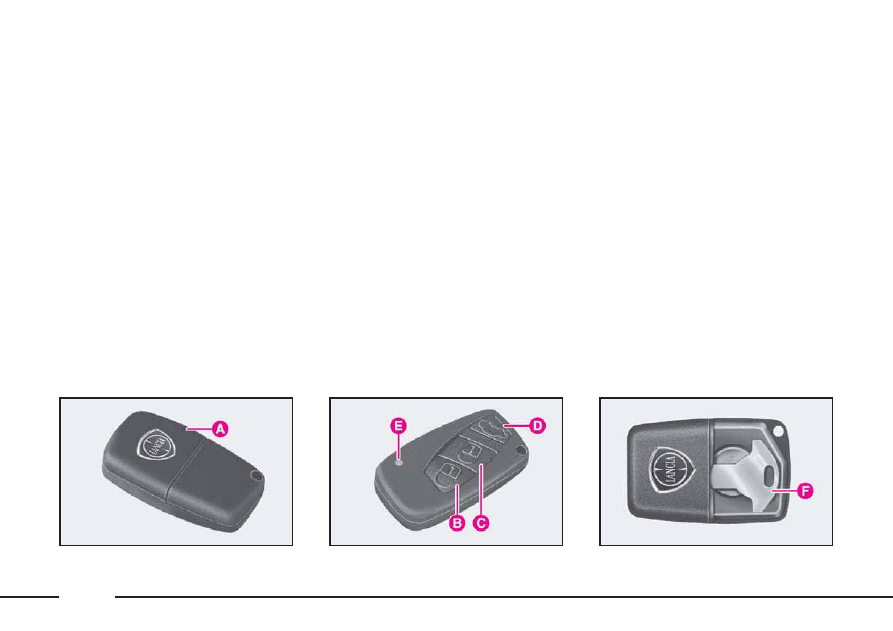Lancia THESIS. Service Manual - part 3

44
RECOGNITION
SYSTEM (KEYLESS
SYSTEM)
(where provided)
The Keyless System is a recognition
system controlled by device A
(fig. 17), called CID (Customer
Identification Device), which per-
forms the same functions as the key
provided with the remote control
supplied with the car. It does not
require any manual action since it
identifies the person that holds the
device as the owner of the car.
Therefore, it is enough for the dri-
ver to bring the CID device with
himself so that the car can recognize
him, allowing him to get into the car
and start the engine without having
to use the key.
In any case, the CID device is
equipped with three buttons per-
forming the same functions as the
ordinary radio-frequency remote
control that enable the driver to
remotely operate on the car.
Moreover, it includes the key for the
mechanical emergency actuation of
the boot and door locks (in case the
CID device battery or the car battery
are run down).
The buttons perform the following
functions (fig. 18):
– button B for remote actuation of
central door opening and the simul-
taneous switching off of the elec-
tronic alarm
– button C for remote actuation of
central door locking, boot locking
and the simultaneous switching on
of the electronic alarm
– button D for remote tailgate
opening
– led E (where required) to indi-
cate code sending to the electronic
alarm system receiver.
To remove emergency key F
(fig. 19), take off cover G (fig. 20)
by levering at point H.
fig. 17
L0A6007b
fig. 18
L0A0224b
fig. 19
L0A6008b